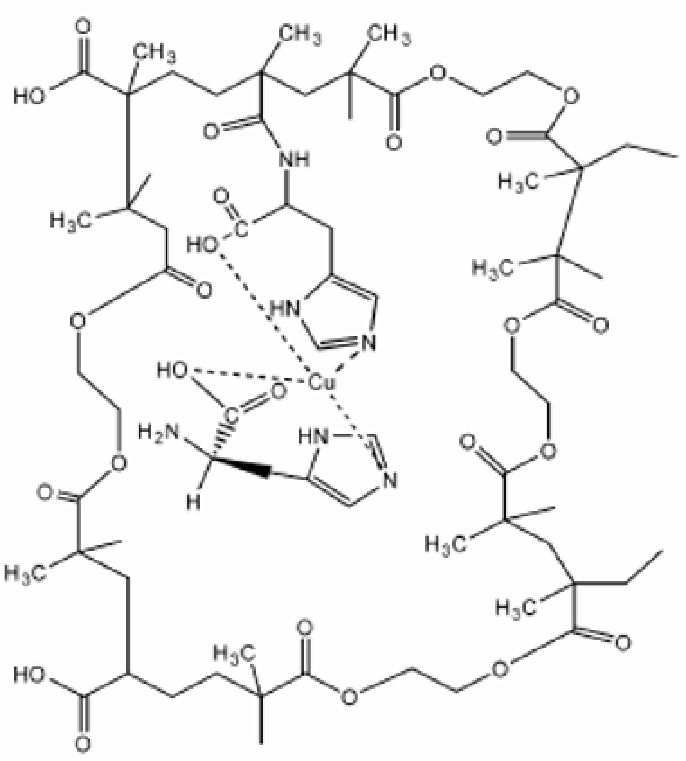Biomedical Engineering Reference
In-Depth Information
Figure 2. Schematic representation of L-histidine template imprinting.
functional noieties of 2- and 3-nitrophenol are in closer proximity, which presents the
formation of the selective binding sites. Selective and reversible recognition of lysozyme by
accordingly synthesized molecular imprinted polymers was observed in aqueous solution
[45]. In this case,
N
-methacryloyl- (L)-histidine-copper(II) was chosen as the metal-chelating
monomer via metal coordination interactions to form complex with lysozyme template and
the lysozyme-imprinted cryogel was produced by free radical polymerization. It is found that
this kind of imprinted cryogel could be used many times without decreasing the adsorption
capacity significantly. Also using
N
-methacryloyl-(L)-histidinemethylester as the metal-
coordinating monomer, Arzu Ersoz et al. produced histidine imprinted beads by suspension
polymerization for the selective separation of cytochrome c [46]. Schematic representation of
L-histidine template formation is shown in Figure 2. For the purification of lysozyme from
aqueous solutions and egg white, choosing
N
-methacryloyl-(L)-histidinemethylester as the
metal-ccmplexing monomer, Odabaşi et al. [47] prepared lysozyme imprinted particles by
UV-initiated polymerization. The purity of the desorbed lysozyme was about 89% with
recovery about 84%. For another example, macromolecular receptors for peptides were
developed based on strong interactions between N-terminal histidine of peptides, and the
Ni(II)-polymerizable NTA ligand, which was incorporated in water-soluble polyacrylamides.
These molecular imprinted polymers show adequate water solubility, while providing strong
histidine binding sites attracting the dipeptides to the polymer surface. It is pointed out that in


